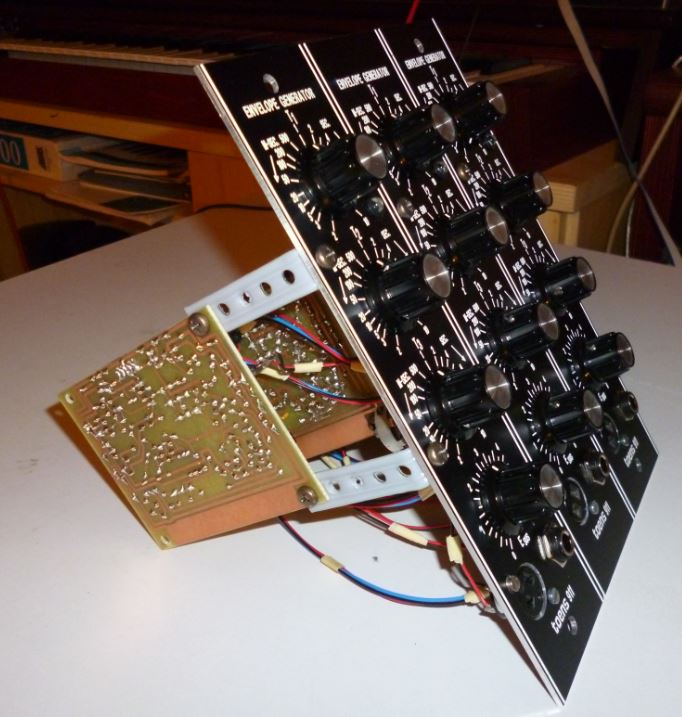
Click to enlarge
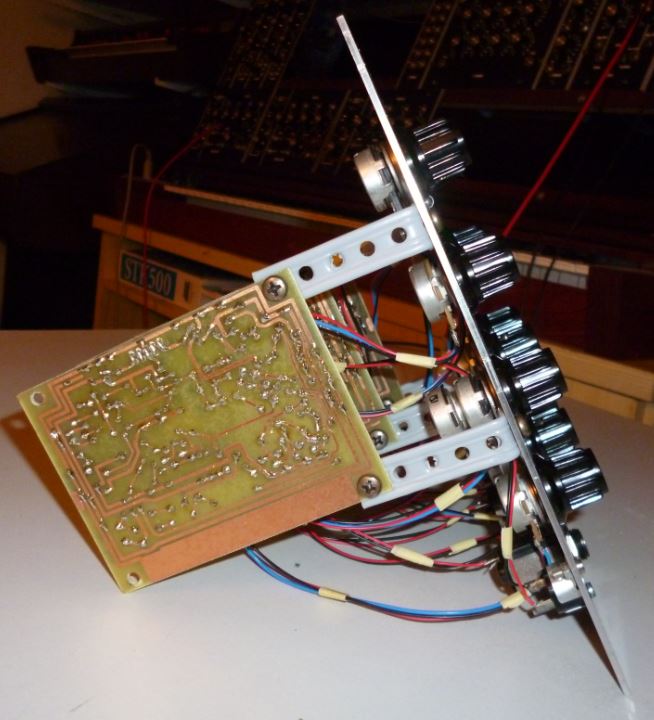
Click to enlarge
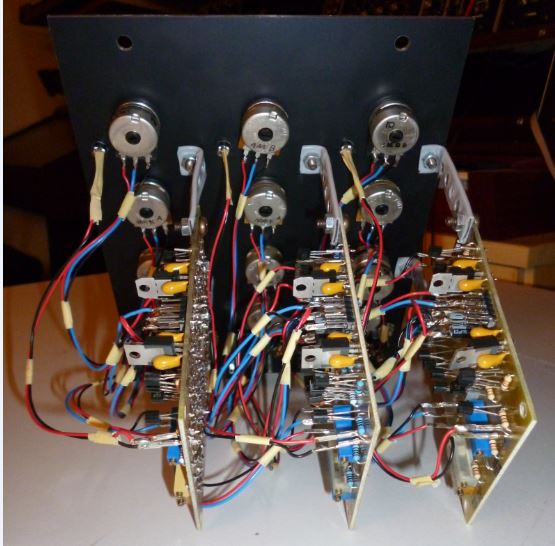
Click to enlarge
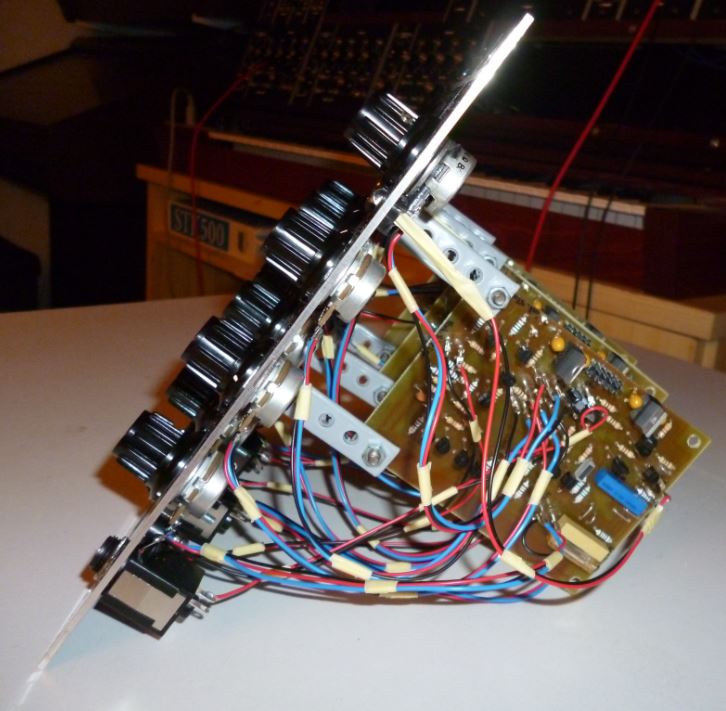
Click to enlarge
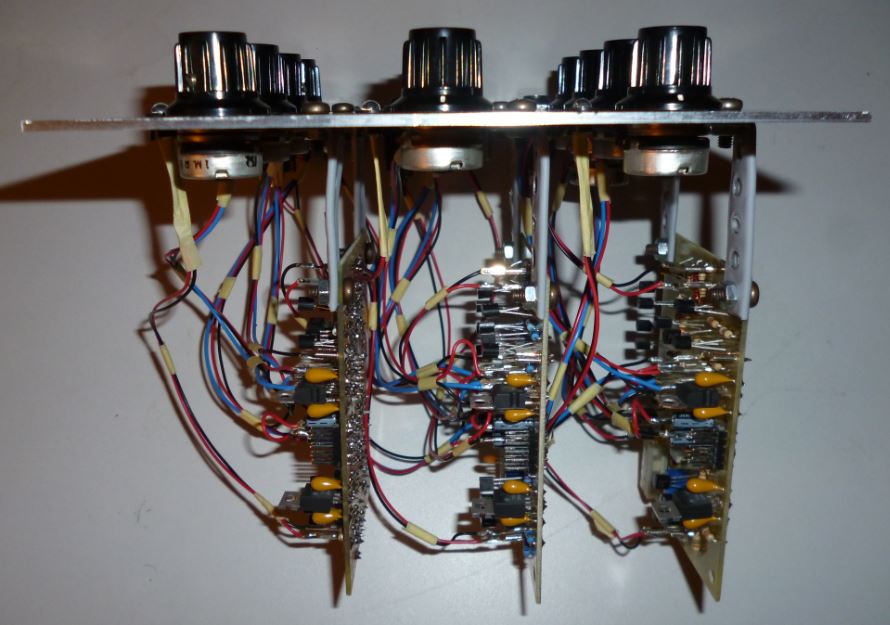
Click to enlarge
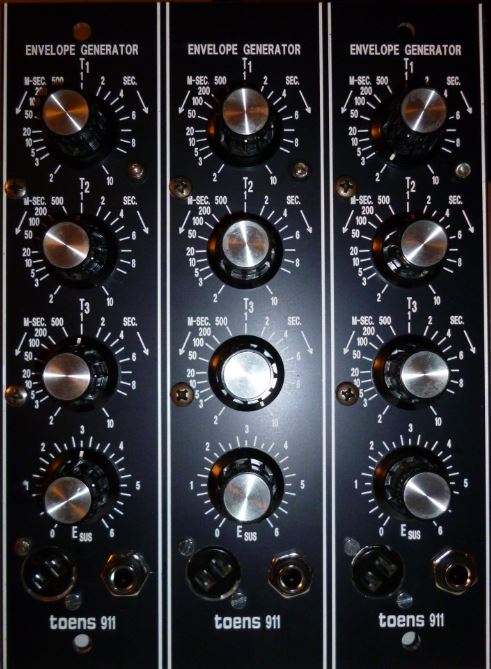

 Click to enlarge |  Click to enlarge |  Click to enlarge |  Click to enlarge |  Click to enlarge |

|
ADSR The envelope is initiated by a so called "STrigger" event, where a reference voltage within the 911 is shortened to ground (Shorted Trigger). This voltage drop initiates the ADSR process. The reference voltage is provided at the Cinch Jones connector at the lower left of the front panel (see Cinch Jones description below). This connector is usually connected via cable to a device which shortens the reference voltage to ground to trigger the 911 to start with the envelope process. These devices can be a keyboard, a sequencer or other devices which have the task to "play a note". The envelope starts with an "attack" phase, where the output voltage provided at the 1/4" phone jack at the lower right side of the 911 front panel rises from 0V to 6V in a time which is determined by the T1 pot at the top of the front panel. After the maximum envelope voltage is reached the 911 enters the "decay" phase, where the output voltage goes down again until the "sustain" level is reached. The sustain voltage is set by the fourth pot. The time which is needed to lower the output voltage to sustain level is determined by the second pot on the front panel, T2. This sustain voltage is kept until the STrigger event disappears, e. g. a key is released or a step sequencer stops running. After the STrigger event has stopped the "release" phase starts to lower the envelope voltage to 0 again. The duration of the release phase is determined by the third pot, T3. After the release phase is terminated the state of the 911 is "waiting for the next STrigger event". An LED on the upper right side of the front panel indicates the envelope output voltage by its brightness. The labelings of the T1, T2 and T3 pots indicate the time a phase lasts, from 2 msecs to 10 secs. This is not really usefull in the msec area as this is barely audible. And the 911 circuit is not the most precise, so the benefit of this labeling is doubtful. But for a rough orientation it's ok. The labeling of the sustain pot corresponds to the sustain voltage of the output envelope. |
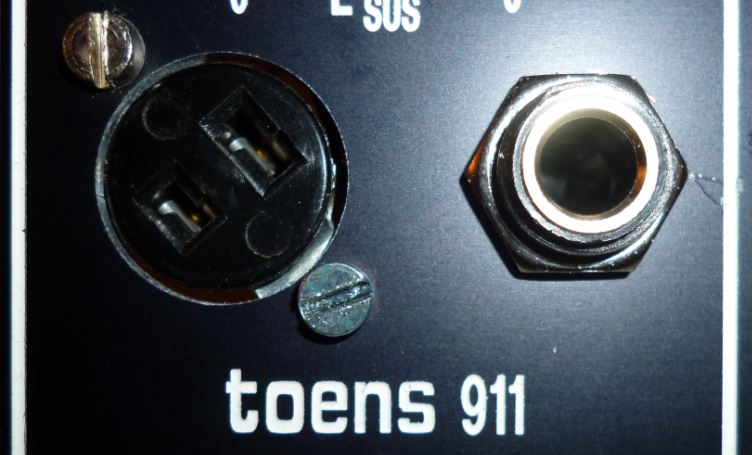
|
Cinch Jones jack and plug The gate event of a key beeing pressed on the keyboard or of a step of a sequencer is beeing reached follows a different concept in many older Moog synthesizers, inclusive the modular systems, compared to other synthesizer systems. Other synthesizer manufacturers and modular systems use a so called "gate" event which is physically spoken a binary control voltage of 0V (gate off) and somewhat between 5 to 10V (gate on). This control voltage is not handled separately from other control voltages and can be used for other purposes than note playing also. The Moog concept differs. The "gate" event is not represented as a voltage but as a current sink (STrigger) and therefore should not be mixed with other control voltages. To prevent an accidental connection between signals, control voltages and the STrigger event no 1/4" phone plugs are used to submit the gate event to corresponding modules but so called 2-pole Cinch Jones jacks and plugs. The Cinch Jones jack serves as input for STrigger events, the plug as output (see also 911A trigger delay for more information). The 2-pole Cinch Jones connector contains two blades of different width on the plug side and the corresponding females on the jack side (see pictures). As the STrigger concept is a current sink, only one pole would be necessary to transmit the event. This is done via the smaller blade. The wider blade works only as ground reference for the connected modules, not as shield like in phone plugs. |
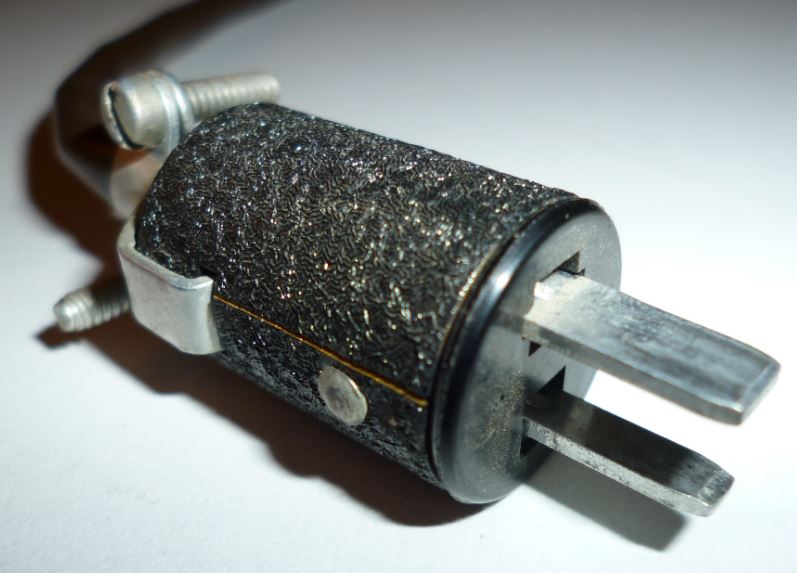
|
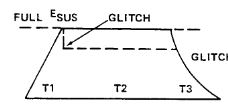
Moog documentation | 
Spice simulation (and reality) |